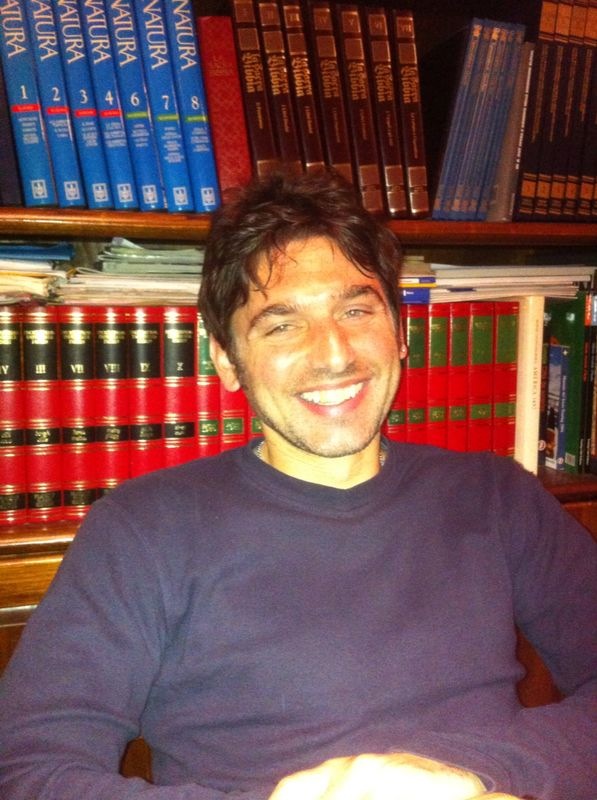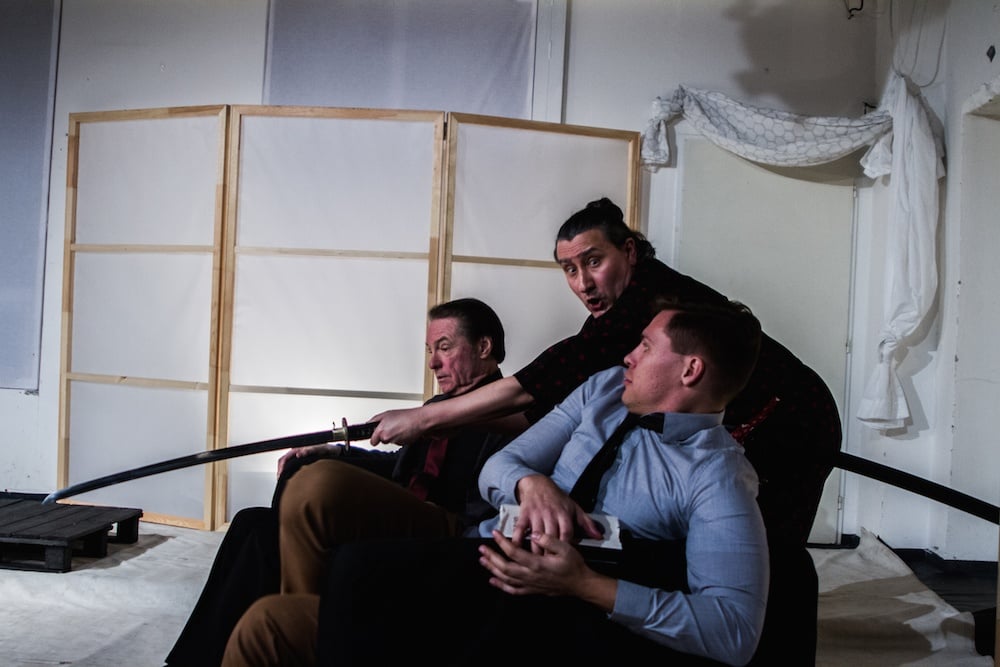The Voynich Manuscript - Research in Action
By Douglas Hajek, MBA on 06 December 2021 09:12
Last updated on 06 December 2021 11:12
PCU research is centred on areas that help our communities. Sometimes this may involve finding practical solutions to real problems. And sometimes it may involve something that pushes the boundaries of our core disciplines and opens up insight into the mysteries of the world around us.
Uncovering a Medieval Manuscript
Dr Stefano Cavagnetto has uncovered just such a project as he is engaging on a three year journey in cooperation with the Italian Cultural Institute in Prague.
Centered around the mysteries of a medieval manuscript closely connected to Prague and Italy, he will lead a series of public lectures and seminars about the mysterious Voynich Manuscript.

PCU will also engage with secondary schools in Prague to introduce the Voynich Manuscript to the wider community. And in the context of the School of Business, Dr Cavagnetto will work with students and lecturers, in class and in special seminars, to further knowledge and expanding expertise in the economics of cultural projects and business cases for preserving and renewing our historical heritage.
Longtime followers of Prague City University will recognise the connection to our keynote international conference in 2013 called the Secret of Ciphers.
Participants in the project
Stefano Cavagnetto
Director of PCU Centre for Interdisciplinary Studies (CRIS) & Dean of PCU School of Business
- project curator and consultant for the historic part of the project
Marisa Milella
- curator, art historian and iconographic consultant
Athansios Alexandrides
-curator and technical / IT consultant
Public Lecture
Register here for the first in a series of free public lectures to be held on Tuesday December 7 at the Italian Cultural Institute in Prague from 18:00 till 19:30 in the conference room of the Italian Cultural Institute
Stefano and Marisa, in the first of the three meetings dedicated to this mysterious artifact, will illustrate the environment that saw it 'appear' at the court of Rudolf II and the intricate history that has characterized it up to the present day.
This event is in Italian with simultaneous translation into Czech.
What is the Voynich Manuscript?
The following is a translation of the webpage for the first public lecture:
The Voynich Manuscript is certainly one of the most fascinating and mysterious medieval manuscripts that ever existed and unites Prague with Italy. Its name derives from the name of the Polish-Lithuanian antiquarian and bibliophile Wilfred Voynich, who found it three centuries later, in 1912, in the Jesuit library of Villa Mondragone in Frascati. The code is now kept at the Beinecke Rare Book and Manuscript Library of Yale University, in the United States.
The manuscript has no title, the author is not known and the time of origin is approximately placed at the beginning of the 15th century. The code is written in an 'unknown language', which no one has been able to decipher to date. It contains disturbing watercolor illustrations, symbols, animals and plants, celestial spheres and undressed female figures.
The history of the manuscript is shrouded in mystery and unfolds between Prague and Italy. It appears for the first time in the chronicles in Prague, in the 1600s, where Emperor Rudolf II of Habsburg would have bought it at a very high price. After being kept in Prague for more than half a century, the code was sent to Rome by the famous multifaceted Jesuit scientist and crypto analyst Athanasius Kircher for a more in-depth study and deciphering, but from that moment its traces have been lost, and they are not known. the conclusions reached by the eminent Jesuit scholar.
The text has been subjected to studies by paleographers, linguists, philologists, archaeologists, botanists, biologists, mathematicians, computer scientists, crypto-analysts who have produced a vast bibliography. But no scholar has managed to provide a plausible and shared interpretation, or even to prove in an incontrovertible way whether the code is written in an unknown language, in a cryptographic system, or if it is a period forgery.
- School of Art, Design & Media (433)
- Student Life (331)
- School of Business, Management & Technology (268)
- Global Engagement (141)
- Research & Creative Practice (95)
- Seminars & Workshops (73)
- Master Speakers Series (70)
- Exhibitions (69)
- New Students (64)
- Academic Partners (58)
- Alumni (58)
- Living Futures (52)
- Graduation (47)
- Visiting Artist Lecture Series (44)
- Conferences (37)
- Digital Campus (22)
- Professional Partners (14)
- Study Exchanges (14)
- University News (11)
- Industry Network (9)
- School of Education (9)
- Media Innovation Technology Series (8)
- Press Release (8)
- Erasmus+ (3)
- Student Societies (1)
- May 2025 (2)
- April 2025 (4)
- February 2025 (4)
- January 2025 (5)
- December 2024 (2)
- November 2024 (1)
- October 2024 (2)
- September 2024 (6)
- August 2024 (4)
- July 2024 (4)
- May 2024 (1)
- April 2024 (1)
- March 2024 (2)
- February 2024 (1)
- January 2024 (3)
- December 2023 (1)
- November 2023 (3)
- October 2023 (1)
- September 2023 (1)
- August 2023 (1)
- July 2023 (2)
- June 2023 (1)
- April 2023 (2)
- March 2023 (2)
- February 2023 (3)
- January 2023 (2)
- December 2022 (5)
- November 2022 (3)
- September 2022 (4)
- August 2022 (2)
- July 2022 (2)
- June 2022 (1)
- May 2022 (7)
- April 2022 (5)
- March 2022 (5)
- February 2022 (3)
- January 2022 (1)
- December 2021 (7)
- November 2021 (8)
- October 2021 (6)
- September 2021 (5)
- August 2021 (8)
- July 2021 (3)
- June 2021 (3)
- May 2021 (2)
- April 2021 (5)
- March 2021 (3)
- February 2021 (4)
- January 2021 (2)
- December 2020 (5)
- November 2020 (8)
- October 2020 (2)
- September 2020 (3)
- August 2020 (1)
- July 2020 (3)
- June 2020 (4)
- May 2020 (7)
- April 2020 (6)
- March 2020 (5)
- February 2020 (2)
- January 2020 (7)
- December 2019 (5)
- November 2019 (12)
- October 2019 (9)
- September 2019 (6)
- July 2019 (1)
- June 2019 (1)
- May 2019 (14)
- April 2019 (10)
- March 2019 (7)
- February 2019 (16)
- January 2019 (8)
- December 2018 (2)
- November 2018 (6)
- October 2018 (10)
- September 2018 (3)
- August 2018 (2)
- July 2018 (3)
- June 2018 (10)
- May 2018 (12)
- April 2018 (9)
- March 2018 (5)
- February 2018 (3)
- January 2018 (8)
- December 2017 (4)
- November 2017 (9)
- October 2017 (7)
- September 2017 (3)
- July 2017 (4)
- June 2017 (3)
- May 2017 (8)
- April 2017 (8)
- March 2017 (13)
- February 2017 (11)
- January 2017 (6)
- December 2016 (3)
- November 2016 (18)
- October 2016 (9)
- September 2016 (8)
- August 2016 (4)
- July 2016 (9)
- June 2016 (3)
- May 2016 (6)
- April 2016 (5)
- March 2016 (78)
- February 2016 (4)
- January 2016 (4)
- December 2015 (6)
- November 2015 (9)
- October 2015 (5)
- September 2015 (6)
- August 2015 (1)
- July 2015 (4)
- June 2015 (1)
- May 2015 (3)
- April 2015 (11)
- March 2015 (6)
- February 2015 (6)
- January 2015 (6)
- December 2014 (1)
- November 2014 (17)
- October 2014 (4)
- September 2014 (8)
- August 2014 (5)
- July 2014 (1)
- June 2014 (10)
- May 2014 (25)
- April 2014 (32)
- March 2014 (53)
- February 2014 (25)
- January 2014 (10)
- December 2013 (10)
- October 2013 (1)
- September 2013 (1)
- July 2013 (4)
- June 2013 (2)
- March 2013 (2)
- February 2013 (74)
- January 2013 (6)
- December 2012 (13)
- November 2012 (3)
- October 2012 (5)
- September 2012 (156)
- July 2012 (1)
- November 2011 (1)
- November 2010 (1)
- November 2009 (1)
- November 2008 (4)
- September 2008 (1)
- July 2008 (1)
- June 2008 (4)
- May 2008 (2)
- April 2008 (3)
- March 2008 (2)
- February 2008 (1)
- December 2007 (1)
- October 2007 (1)
- August 2007 (1)
- July 2007 (1)
- June 2007 (4)
- May 2007 (1)
- April 2007 (2)
- March 2007 (3)
- January 2007 (1)
- November 2006 (1)
- December 2005 (1)
- November 2005 (1)
- October 2005 (1)
- August 2005 (1)
- May 2005 (1)
You May Also Like
These Related Articles

Sustainable Cash Management for SMES Seminar

Made in Italy: an interview with Dr Domenico Pace

